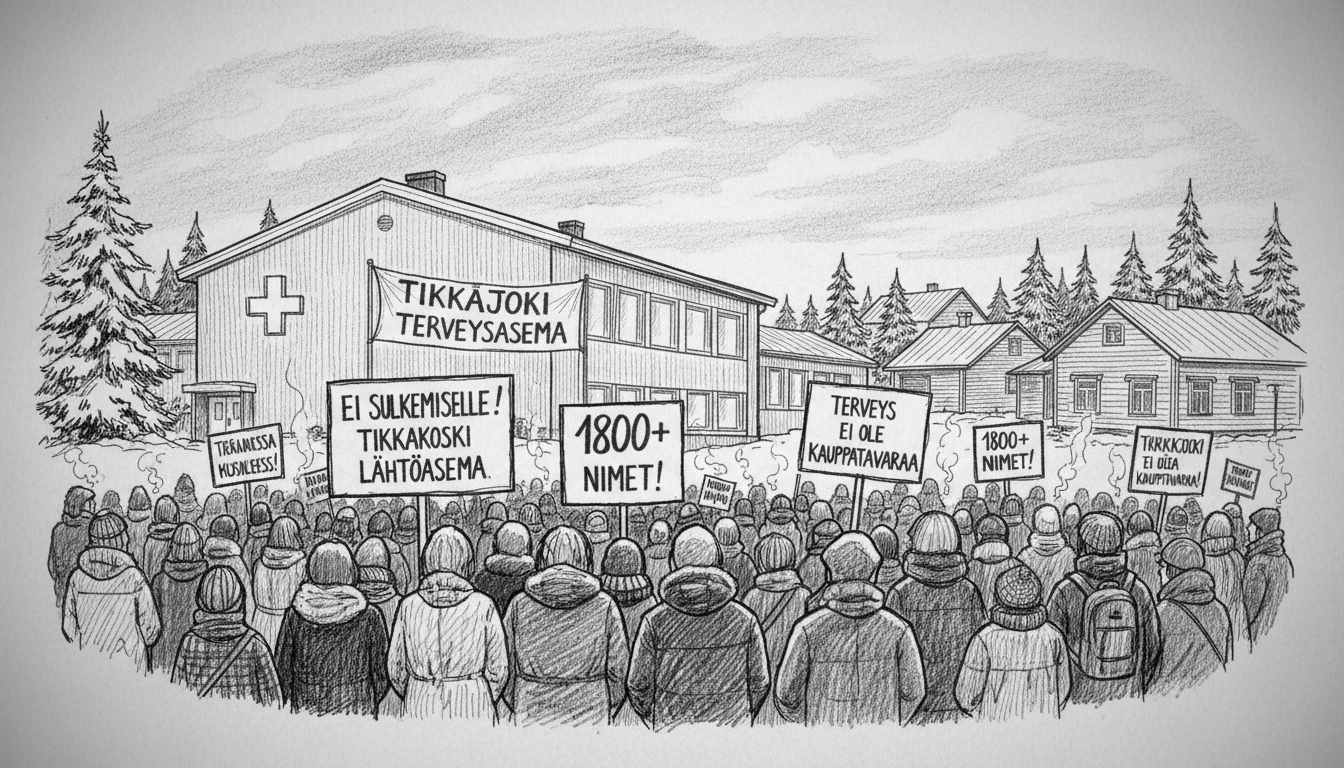Residents of Tikkakoski gathered in large numbers this weekend to protest plans to close their local health station. The demonstration showed strong opposition to the Central Finland Welfare District's proposal to shut down the facility. Community members called the plan unreasonable and poorly conceived.
Protest organizers presented officials with a petition against the closure. More than 1,800 people signed the document demanding the health station remain open. The substantial number of signatures demonstrates deep community concern about losing local healthcare access.
Pekka Tuunanen leads the Tikkakoski village association. He described the closure plan as mere harassment of local residents. Tuunanen suggested decision makers need refresher courses in basic mathematics. His comments reflect frustration with what many see as flawed decision-making processes.
This protest highlights growing tensions in Finland's healthcare system. Recent reforms created larger regional welfare districts that now manage local health services. Many rural communities fear these changes prioritize cost savings over patient access and quality care.
The Tikkakoski situation represents a broader pattern across Nordic countries. Sweden and Norway face similar challenges maintaining rural healthcare access while managing costs. These nations struggle to balance efficient service delivery with their commitment to universal healthcare coverage.
Local health stations provide essential primary care services in Finnish communities. They handle routine medical needs, vaccinations, and basic emergency care. Closing these facilities forces residents to travel longer distances for medical attention. Elderly residents and families with young children face particular hardship when local services disappear.
Finnish healthcare reforms aim to control rising costs and standardize service quality. Yet rural communities consistently push back against centralization efforts. The Tikkakoski protest follows similar demonstrations in other Finnish towns facing service reductions.
What happens next for Tikkakoski's health station remains uncertain. Local officials must weigh budget constraints against clear community opposition. The strong turnout and substantial petition suggest this fight will continue. Decision makers face pressure to reconsider their plans or propose acceptable alternatives.
International observers should watch this situation closely. Finland's approach to rural healthcare challenges could influence policy decisions across the Nordic region. The outcome may signal how Scandinavian countries will balance fiscal responsibility with their famous welfare state commitments.

